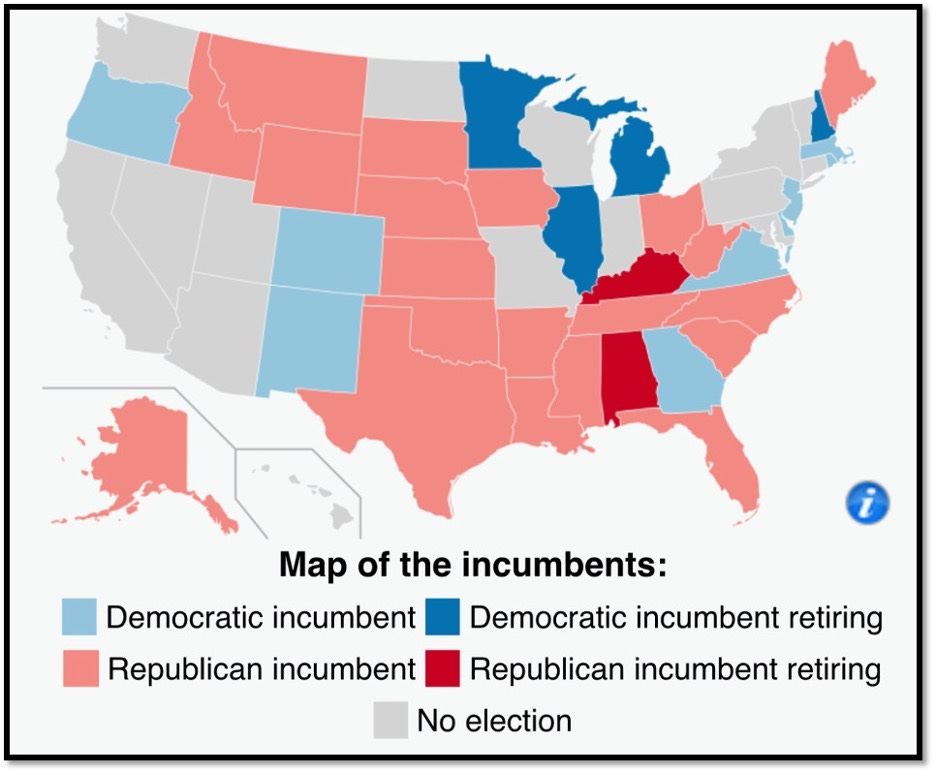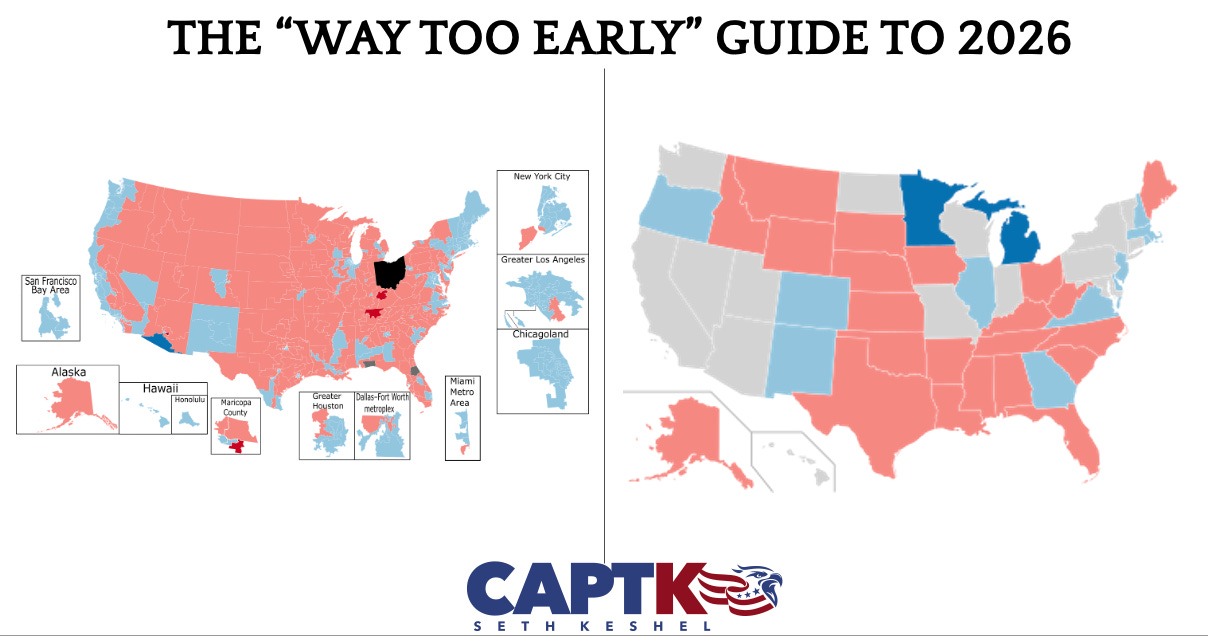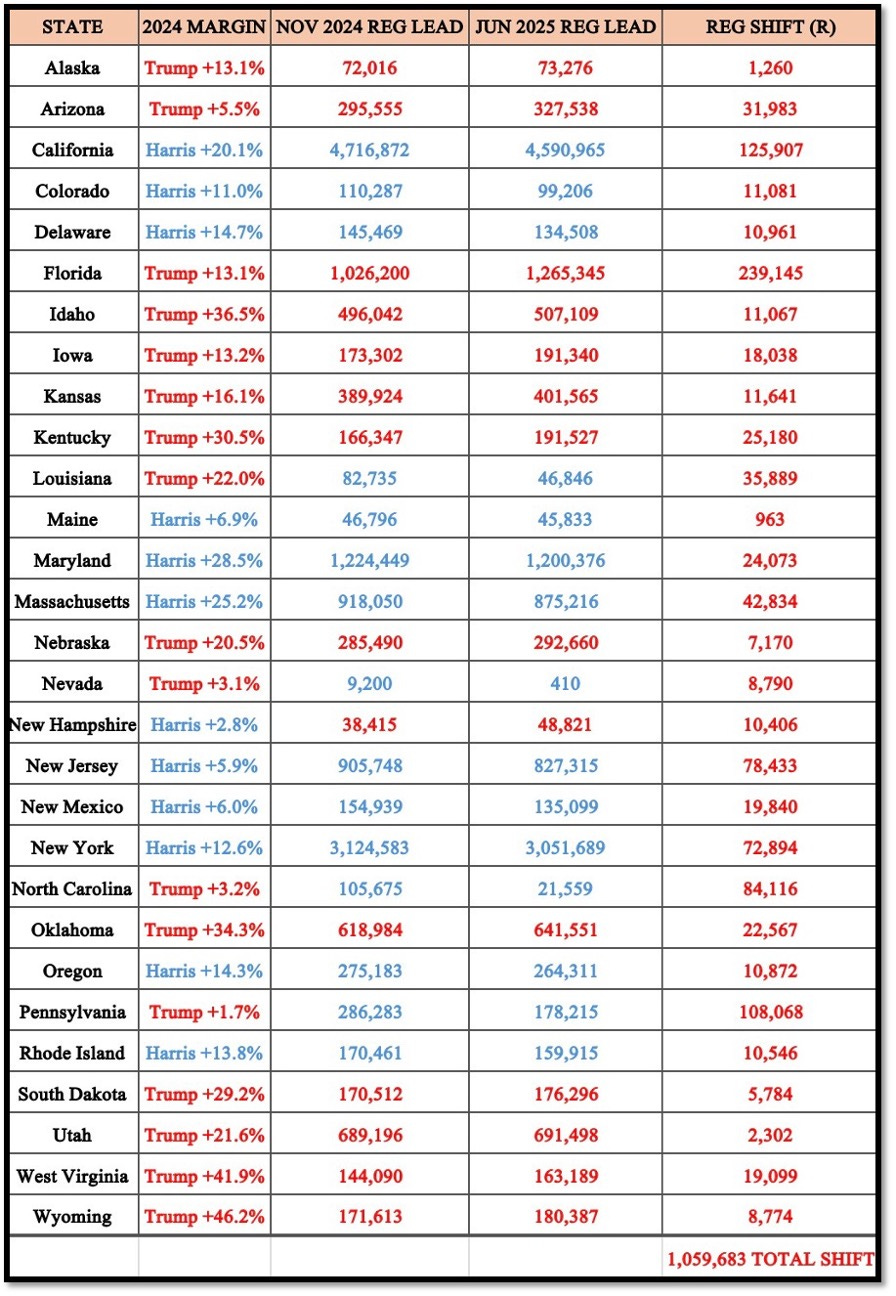Initial Forecasting for 2026 U.S. House Races (June 2025)
I’m going to do everything I can to go 435/435 in these predictions, while aiming with maximum efficiency to expand President Trump’s narrow House majority. This is the first take.
It’s 15 months until the 2026 midterms are fully upon us. Yes, you read that correctly; while it is always election season in some way, with candidates declaring, consultants wheeling and dealing, primaries buzzing, and rallies forming, ballots will be in the mail by this point in September 2026. While much can and will change between now and then, I have already begun digging in on the 435 seats that will decide the U.S. House majority and tell us a lot about how the second half of President Trump’s term will go, at least from a legislative capacity (and whether or not the American people will have to deal with more nonsensical impeachment theatrics).
I’ve already determined that it will take hell freezing over for Republicans to lose the Senate majority, which will likely have anywhere from 51 to 57 GOP members in it once the dust settles. 2026 is a really good year for playing defense if you’re the Senate GOP – but with Georgia as really the only clear opportunity for a Republican pickup, I wouldn’t call it a great year for going on offense.
What people want to know, over and over, is “How are things going to shake out in the House?” Before proceeding, familiarize yourself with what history has to say about that subject:
The biggest headwinds, as demonstrated by historical precedent, are in the House. Currently, the U.S. House Republican majority is sitting at a measly 218-215, owing not only to the perception that the establishment Republican Party is way less popular than Donald Trump, but also to significant changes (and redistricting) made to election law in the past decade, which allows for rampant cheating to distort the strength of legislative majorities at federal and state levels. Read more about the impacts of down ballot cheating in 2024 here.
Clearly, just based on averages and math, it’s an uphill climb for the GOP in 2026 to hold the House. Even taking Biden’s loss of nine seats, the best incumbent midterm performance in 20 years, would put the GOP in the minority at 224-211. The average loss, since 1934, of 27 seats would put the Republicans in Congress at a 242-193 minority. More on the 2026 dynamics later.
The "Way Too Early" Guide to the 2026 House and Senate Midterms
Believe it or not, I am already taking on questions regarding the next two election cycles. I have come to realize that election season is an enduring thing that never really ends, kind of like how the NFL season proliferates itself through the calendar in unique ways:
The good news here is that Democrats are busy sabotaging themselves at every turn, from the Mexican flag inspired street riots to their renewed efforts to impeach President Trump, who may well wind up at over 60% approval if the fragile peace in the Middle East holds. The Democrat Party is dying:
The Steady Demise of the Democrat Party Goes Hand in Hand with Street Chaos
Today’s article was going to summarize voter registration changes since November, but since I’ve had people asking me for the past few days what I think of the latest L.A. riots causing chaos, division, and derangement in an already deranged state led by a 2028 hopeful, an opportunity to blend research and opinion has arisen. My initial thoughts are very black and white, as is customary with me:
The window is open for the GOP to hold the House and expand their flimsy majority (220 to 215 as elected), and innovative strategy, excellent candidates, and as a bonus, election reform is needed to get the job done. Now, why should you listen to me? If you’re new here, check out how my last round of predictions went.
Vindicated: Captain K's 2024 Predictions Review
This post is for not only my supporters, but my haters, and also happens to be my first post since the great Donald Trump 2024 election victory. Now that all states (as well as separate electoral votes awarded by district) have been called, let it be known I was a perfect
In that presidential race, I separated my states into three tiers:
· Safe electoral votes (margin of 8 or more points to either candidate – examples of Montana to Trump or Maryland to Harris) – 219 to 191 for Trump
· Leaner electoral votes (margin of less than 8 points and very likely predictable to one candidate – examples of North Carolina to Trump or New Mexico to Harris) - 31 to 16 for Harris (235 to 222 for Trump cumulative)
· Decisive electoral votes (states instrumental to determining the victor – Arizona, Georgia, Michigan, Nevada, New Hampshire, Pennsylvania, and Wisconsin) – 77 to 4 for Trump (312 to 226 for Trump final)
Ranking my races in this fashion made it easy to keep score and for everyone to track my analysis; therefore, I’m going to field the same three categories for the battle for the 2026 U.S. House majority.
Note: This is a surface level preview and initial read on the House races; as time progresses, I’ll reveal more analysis, including party registration data and detailed forecasts.
2026 U.S. House Tiers
Safe – I have the minimum margin histories/forecasts in mind for which seats belong in this category, but these are seats with very low odds of flipping, or none at all. Many of these are Democrat urban vote dumps in red states, or their blue state stronghold counterparts, or conversely, vast Republican frontier or conservative suburban seats. In many of these races, there is little need to invest serious funds against incumbent Democrats.
Leaner – A seat that could flip if the opposing party is enjoying a wave year (think 2006 Democrats against Bush, or 2010 or 2014 Tea Party Republicans against Obama), or with the right combination of circumstances, including the absence of an incumbent or localized issues. As of right now, I would recommend Republicans put up a serious fight for all of these; that assessment could change on a seat-by-seat basis if the overall electoral dynamics begin to favor Democrats.
Decisive – All hands on deck to defend GOP seats in this category, and to unseat Democrats. This is where the rubber meets the road.
Landscape








